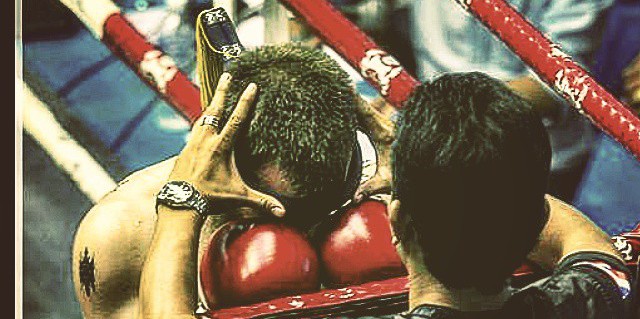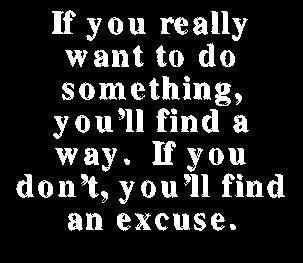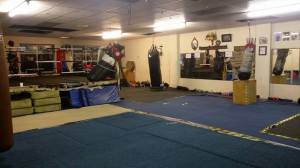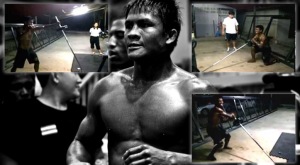I have been involved in Muay Thai for 10+ years now. Whilst my training has been consistent, my fighting has been less so, with a break between 2017-2019, and a return at the end of 2019 cut short after just one bout due to the Covid lockdown. In that time, some of my priorities and motivations changed, leaving me with the feeling that maybe my days of competing were done and it was time to focus other interests, in particular coaching and strength training. At least that way, I wouldn’t have to cut weight again!!
And yet, on Saturday 18th November 2023, at the age of 36 years old, I climbed over those ropes once more at the Sandee Ultimate Fight Night. After five tough rounds against a game opponent, my hand was raised in victory. The “Bearded Ninja” was back.
Why?
Why did I decide to do this? Why did I decide to get back in the ring in my mid-thirties, four years after my last bout?
And what did I learn along the way?
Perhaps most importantly, what comes next?
The Why
The vast majority of my time in Muay Thai was spent at the infamous Shor Chana gym, in Preston, under the tutelage of the legendary Master Chana.
This gym sadly closed, and Master Chana is enjoying a well-earned retirement. I have known Tommy and Alice Johnson for a long time, having trained with Tommy at Shor Chana for several years, and leapt at the opportunity to come onboard with the new gym they were opening, Johnson’s Muay Thai.
In all honesty, I had this idea of coming back to fighting but it never really became concrete, just an abstract notion and, as time went on, I felt myself drifting further and further away from the idea.
Eventually, I had all but concluded that I was done with fighting.
What changed?
I did.
I got stronger and healthier, mentally as much as physically. I improved my Muay Thai for the first time in a while – now that I was back training regularly and surrounded by a growing team of aspiring fighters.
The people around me gave me a push too, with lots of consistent, gentle (and some not so gentle) encouragement. And, when the right moment came, someone I respect called me out on an excuse I was making. I had convinced myself that I wouldn’t have the time to get enough training in with all my coaching, that my job wouldn’t allow me to take on the stress and fatigue I had experienced in previous fight camps and still perform at work. This person simply asked if that was really true. And then I had to actually think about it. I realised that maybe it wasn’t true because a fight camp now would not look like one did 4-5 years ago.
I had also enjoyed the privilege of being part of the corner team at numerous fight events, with an active and ever-growing fight team. After a good 12+ months of this, I suddenly realised I had the bug back. I loved going to the shows and being a part of it all, but I wanted more. I wanted to experience being in the middle of it all too, not just in the background.
The more I thought about it, the more and better reasons I found to make the comeback.
They say that the biggest deathbed regrets are always the “what if” questions, the regret of an action not taken. I didn’t want to look back and think “what if”. I knew that I hadn’t achieved what I wanted to through fighting and that this would be my last chance to fulfil those aims. I had to take this final opportunity to have a go.
Finally, I was also teaching classes full of fighters, almost none of whom had ever seen me fight. Sure, I sparred with them all regularly, but nothing would cement my position as a fight coach in the eyes of the team than actually seeing me perform in the ring. I always say that I’ll never ask you to do something in training that I wouldn’t do myself, and why shouldn’t this apply to fighting too?
So now I had my “why” – or several of them.
The next question was “how?”
The How
So here I was, 36 years old, with a busy full-time job in which my earnings were directly tied to my performance, alongside several hours a week of PTs and classes. I already felt busy, so how on earth was I meant to get enough training in to be in fight shape? And how could I do that without becoming so fatigued that my work suffered?
I thought back to previous fight camps, during which I would be training as hard as possible six, sometimes seven, days a week, operating on the mentality of making sure I was always “doing more” than my opponent. Early morning runs, 3-hour Muay Thai sessions every night, lots of strength and conditioning on top of it all, the training load on top of full-time employment was insane. This was one of the major obstacles to me making the decision to return.
What changed?
I got some good advice.
Someone pointed out to me that maybe I didn’t need to be training like that anymore. That maybe the 10+ years of training time I had already accumulated would allow me to reach peak condition without the same crazy volume. And the more I thought about it, the more it made sense. One lesson I’ve really learned over the past couple years in the simple principle that “the optimum volume of training to achieve the best results is often less than the maximum volume of training that you can survive.” More is not always better.
Even still, I knew I would have to be creative to get enough training in. I already had three strength and conditioning sessions per week locked in, so that front was already sorted. We simply reduced some of the volume and changed the focus from Olympic lifting (in which I had been dabbling) to fight specific work. This was a benefit of having handed over my S&C programming to our dedicated S&C coach – if left to my own devices, I probably would have increased the volume in those sessions, not decreased. That objective and expert 3rd person view can be incredibly valuable in determining the appropriate training load.
I then leaned on some of my fellow fighters at the gym to have them hold pads for me before class on days where I was teaching. The benefit of a large fight team became so clear here, without them I would have struggled.
Rather than three-hour sessions every night, sometimes my training sessions lasted maybe 20-30 minutes. So, I had to focus on the high-impact, high-return, “big rocks” – the Pareto Principle teaching us that 80% of our results come from 20% of our efforts. So, I focused on getting as much as possible out of that 20%.
Looking back on previous fights, my first weight cut was the easiest, the weight just flying off. After that they got tougher, largely due to my own idiocy in not controlling my eating habits after fights (there’s a big lesson there for upcoming fighters!). But now I’d spent the last three years or so focusing on strength training, building muscle, and eating in a calorie surplus. So now when I dropped my calories a little bit, the weight started to fly off again just like the first time. This made things much easier for me, allowing me to fuel my training properly and eating over 2,000 calories a day throughout almost the entire fight camp.
I made weight pretty comfortably, although a spanner was thrown into the works when my opponent missed weight by almost 3kg! That fight couldn’t proceed but I managed to get a last-minute match up on another show the following week. Two weight cuts in two weeks were certainly not ideal, but I’d done the hard work and I knew I just had to stick to the plan for one extra week.
In the ring, I felt better than I ever have done before. I felt strong and confident. I knew that I was going to win. Not in an arrogant way, not dismissing my opponent, just filled with a quiet confidence that I believe was, at least in part, down to daily affirmations and journalling throughout fight camp. My emotional and psychological growth over the past few years really started to pay off!
What did I learn?
- Focus on the “big rocks” – this is hardly a revolutionary idea and is the go-to of almost any productivity guru or self-help writer but my journey in this fight camp really proved this principle. The Pareto Principle suggests that 80% of our results come from 20% of our efforts, so focusing on that 20% in order to maximise the 80% of results is key. That doesn’t mean that the other 80% of your efforts don’t matter – they do if you want to hit 100% of your potential, and 20% is still a lot – but it does mean that when crunched for time, focusing on a few key fundamentals can get you where you need to be.
- You DON’T have to kill yourself every day in the gym! Fighters work hard. We have to. We are driven to do so, both from natural inclination and the desire to win. A common refrain in combat sports is to assume that whatever you are doing, your opponent is doing more. This is intended to drive you to work harder and longer. In itself, this isn’t necessarily a bad thing. If you’re going to fight, you damn well better work hard. But this doesn’t mean that every session in fight camp needs to be 110%, especially when you are cutting weight and on a calorie deficit. This will lead only to overtraining, burnout, injury, illness and, paradoxically, less results. Everyone is an individual with different tolerance levels for work capacity, but as general rule, no more than 2-3 sessions a week should be full on, 100%, leave your soul on the gym floor kind of sessions. Most sessions should be around 90% of your capacity – leaving 10% in the tank for tomorrow.
- I mentioned this earlier, but another principle (similar to the above) is that “the optimum volume of training to elicit the desired results < the maximum volume of training you could survive”. Sure, you can survive those 3-hour sessions six days a week, but you might actually be limiting your progress whilst increasing your risk of injury. Training is to stimulate a physical adaptation in your body. Once you have achieved the minimum effective dose for eliciting that adaption, there is little benefit to going beyond it. Doing so will only lead to diminishing returns or even regression, whilst leaving less room for future adaptations
- The importance of the “mental game” – fighting is 90% mental, or so they say. This may seem odd at first, as it appears a distinctly physical activity. And yet, the mind is the greatest limiter on the physical body. The body will only do what the mind believes it can do. Many of us will have seen those fighters who look incredible in the gym but fall apart in the ring and bring a fraction of their ability into the fight. I know this type of fighter well because for a long time I WAS that fighter. Not anymore. Outside of fighting, over the Covid lockdown period, I spent a lot of time focusing on personal growth, psychological development and really working to understand myself. Over the past 12 months, my S&C programming has fed into this growth by merging the mental and the physical to a degree I had not previously considered possible. Altogether, I was able to climb into that ring in a much better mental place than any of my previous fights, feeling calm and confident, and able to display much more of my ability than I had previously.
So that’s the why, and the how, and what I learned along the way. Only one question remains…what next?
What next?
So, there I was. I’d done it. I’d made my return, got in great shape, and won my fight. I’d proven myself, both to myself, and to my teammates and students. Now I had a choice to make.
I could say, “that’s it then”, rest on my laurels and return to what I was doing previously. Nobody would have judged me for it, I don’t think. And if they did, I wouldn’t care. If you’re going to fight, it better be for your own internal motivations not the approval or validation of others!
I wouldn’t need to worry too much about staying lean – indeed, I’d be back on a calorie surplus, building strength and muscle. Eating and lifting weights – two of the greatest joys in life!
I’d be able to focus on my PTs and coaching.
I’d have free time again for social events, something that always takes a hit when in fight camp.
I wouldn’t have to deal with the stress and anxiety that is an inevitable companion of preparing for a fight.
Seems like a pretty sweet deal, right?
Yet, I knew the moment I stepped out of that ring, flush with the emotions of victory, that I wasn’t done yet. I’d proven that I could fight. But that wasn’t the only aim I’d ever set myself in the ring.
My mind returned to that moment, years ago, when I stood in Shor Chana gym, still a relative beginner, looking up at the section of the wall holding photos of just a handful of Master Chana’s many champions over the years. I swore to myself that, one day, my picture would be on that wall too. This motivation carried me through many years of consistent training.
Alas, with Shor Chana gym no more, that dream can never be fulfilled. Yet, my fighting journey is not over, and neither is this dream. I truly believe that in 2024, I will be able to add another belt to the wall of Johnson’s Muay Thai.
To this end, the number one aim is to stay as active as possible. I’m 36 years old (did I mention that already?) and whilst I feel like I am in great shape, the simple fact is that I am no longer in my 20s and there is only so long I will be able to keep doing this. One or two fights a year would simply not be a worthwhile return on investment, nor would it get me much closer to fulfilling my aims.
That’s why, within mere days of my last fight, I was matched up for another show in February 2024. Whilst, of course, anything can happen and things change quickly, my aim is to fight every 2-3 months throughout 2024. If I can put in some solid performances and get a few consistent wins, there is no reason why I couldn’t be fighting for a legit title by the end of the year.
More than anything, though, I just want to enjoy this journey. Now that I’ve found myself back in the fighter’s life, knowing that my remaining time in that life is limited, I just want to appreciate every moment, all the highs and lows, all the lessons that I will learn. I want to be present and engaged in everything I do. Most of all, I want to ensure that, when I do finally come to the end of my life, of any regrets I may have, this is not one of them.







 ave to be proper fit for it, don’t you?” Or perhaps, “I’ll be back in the gym as soon as I get fit again.”
ave to be proper fit for it, don’t you?” Or perhaps, “I’ll be back in the gym as soon as I get fit again.”




